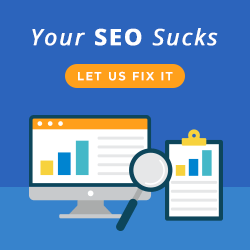Did you enjoy this video? Want additional insights on Google display ads and marketing? Check out this site and get started today.
Video transcript: Let’s start to dig in then. The two main areas we’re going to cover are the display ads formats and then the targeting. There are four types. We’ve got the four line text ad that you’re used to seeing on Search. We can show those ads on these 2,000,000 websites. They can be the same ads, they can be slight variations. We’ll talk about that. Image ads, which is where we’re going to focus. But you can also show video ads on these websites and ads on mobile.
Mobile Display is massively untapped. As Ed has already said iOS is going to be the biggest, mind blowing, but the biggest operating system that people use online. Fifty percent of your traffic, we’ve already heard is going to come from mobile devices by mid this year in Australia. There is a massive opportunity here.
I’ll have a quick word on text first but we’re going to focus on image ads today. My suggestion for you is to get three different types of ads built. The first one is easy. Grab your best Search ad. You know what’s working, you’re split testing, you’re doing all that work right over on Search. Take the knowledge that you’ve already paid for and use your best Search ad as one of the ads that you’re going to put out there on the GDN.
How you put it out there, don’t worry about that yet, just do the big picture work. The next one is going to be more of that interruption ad. So some little tricks there, you might put more numbers. Description line 1 might start l. and then a big benefit, 2. big benefit. Short ads, so not using your full 35 characters and again, sorry , if you don’t do AdWords, I’m assuming that most people already do AdWords and you know Search.
But that description line 1, description, line 2 don’t use the whole 35 characters because almost everybody’s ads are the same size. If you use a little short ad, 15 – 20 characters on each line, that’s really eye catching because you’ve got all this white space around your display ads that other people don’t and that drags my eye over to your site. Remember this is interruption marketing. They’re not looking for you, you’re just trying to grab them off the blog post they’re on.
Then the keyword stuffed ad. So if I’m selling rainwater tanks, I’m going to have water tanks in my headline, I’m going to mention rainwater tanks in my description line, maybe twice on my two lines and maybe on that Display URL as well. The reason for that is Google may look a little differently on those ads and may show them in different places. You’re going to give Google a lot of control with this to show the ads that it thinks are best on that particular site when that person lands on that site and decides to show your ad.
By having a range of different ads, you basically greatly increase your reach. You’re giving Google more options to play with. It says, I think this ad is going to work well over here, I’ll use this one. Then it’s going to track all of that for you and try and optimize your account based on that. The key is to have a range of text ads.
Let’s talk about image ads because this is where the biggest opportunity lies. A lot of people have text ads running on the Display Network by mistake. They haven’t figured out that little tick in the campaign settings that splits your campaigns in half and stops your ads showing on Display as well as Search. When you build a new, certainly the old way of building campaigns in AdWords, one campaign would be by default across both.
Who knows what they’ll do with enhanced marketing campaign, maybe they’ll roll back to this way. So there are lots of people running text ads on the GDN because they don’t know that they’re doing it. There are very few people running image ads because it takes more work, it takes a graphic designer.
There are eight standard IAB sizes that you can run. I’ve got a slide a little later with my top four. But the 300 x 250 and it’s always the x axis first, 300 x 250 pixel ad. If you’re only doing one size, stick with that. I’m not going to give you a big list of sizes. Your graphic designer should know what the standard sizes are.
There’s also this little thing, 320 x 50 pixels. That’s the mobile one. When you go and get your pack of ad images done from your designer, make sure they give you a 320 x 50 image ad as well. It gives us a lot more places we can show your ads and very few people go and build those.
I’ll talk about this a little later on but the rectangle ads we tend to get the best results from those. The leader board and the banner ad tend to be not so good. I think that’s more because this sort of thing tends to be right at the top or right at the bottom of a website. As soon as you scroll, that’s out of the way, whereas these ads tend to be right next to the content. The blog post wraps around that big rectangle ad on the right hand side of the page typically.
The skyscrapers, the narrow and the wide skyscraper tend to work pretty well but there is less inventory of those out there. So you can get those designed if you want but there are not as many places that Google can put those. So typically that will come later. I’ll give you our process for that a little later on.
Are you a newbie in online business marketing? If you are, using Google Analytics data and creating effective Google display ads could be very challenging. Click here and see how an expert can help you on this.


